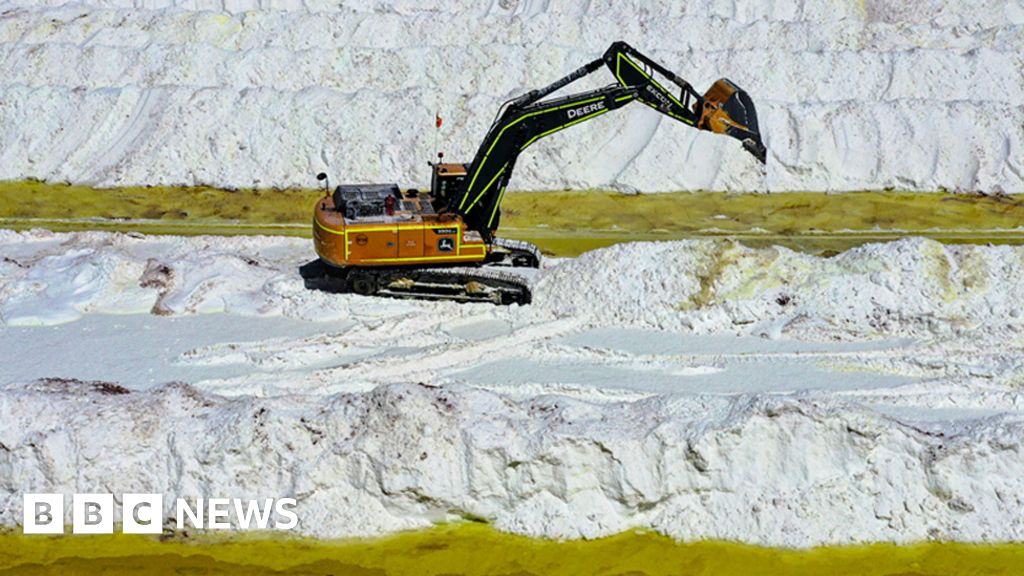…
As Chinese companies have increased their overseas mining operations, allegations of problems caused by these projects have steadily risen.
The Business and Human Rights Resource Centre, an NGO, says such troubles are “not unique to Chinese mining” but last year it published a report listing 102 allegations made against Chinese companies involved in extracting critical minerals, ranging from violations of the rights of local communities to damage to ecosystems and unsafe working conditions.
These allegations dated from 2021 and 2022. The BBC has counted more than 40 further allegations that were made in 2023, and reported by NGOs or in the media.



What do you think is harder, leveling, elevating, compacting, laying down ties, and then laying and welding kilometers of the rail…or you just digging a hole every 200 yards and hanging wire?
We are already doing things a lot more difficult by simply laying down track, electrifying it isn’t going to be a problem. If the Russians could electrify rail all the way to the Pacific +50 years ago, I think we can manage.
No, you could hang wire relatively easily and cheaply. But electrifying the rail would be the best solution. Something you could easily do while doing track maintenance over time.
The rails we utilize have to be regularly replaced anyways, we aren’t running on the same track we laid down a hundred years ago.
This is not a difficult material problem, this is how the majority of large nations handle mass transportation. America is just more concerned with protecting their car and airplane industry than they care about logistics or about solving climate change.
The tracks could have been laid down 100 years ago and just replaced on an as-needed basis. Why you think that rapidly laying wires all over the place in order to stave off climate change is some simple task that people just need to make an effort at I don’t know.
Because it is a simple task? Compared to laying down a road or even maintaining it it’s a breeze. San Francisco recently converted all of its rail to overhead wiring in 4 days.
The reason so many countries are laying down thousands of miles of new electrified rail is because it is immensely more economical and less time consuming than any other mass transportation network. It’s the same reason why California is doing high-speed electric rail, because it’s too economically damaging not to.
Expanding road lanes and the maintenance of these expansions would cost the state several more times than highspeed rail, and move significantly less cargo and people.
Again, you’re talking about things that have already been done vs. things that have to be done. I’m not sure why you think it’s easier to do something that hasn’t been done yet than something that you don’t have to do because it’s already done.
We were discussing the solution to mitigate fossil fuels consumption while not relying on environmentally and socially exploitative battery industry.
Therefore I am comparing what we are doing to what we need to be doing to mitigate this risk. I don’t know why you find that a foreign concept…
That would be like me questioning your solution of battery powered cars. Replacing every single combustion engine in America is harder to do than what we have now…no shit. The whole point is choosing a replacement that mitigates the stated undesirable effects, which requires change.
When looking at systems of mass transit you have to compare things like production cost and maintenance to things like capacity or efficiency, in all these categories no vehicle exceeds the effective outcome of electric rail.
Somehow you have come to believe that electrifying rail is difficult when compared to other mass transit systems despite not providing any reason why. Roads are already harder and more expensive to install and maintain, and we keep on expanding them just fine.
How much in terms of would have to be used to lay all these wires and maintain them?
How much in terms?
I’m not sure what you are asking, but if it’s asking how much electrifying a railway would cost, it depends on what you are doing.
The cost to electrify an existing railway is only around 1-5 million dollars a mile depending on locality. Which is cheaper than building a two lane undivided road ( 3-4 million per mile), and vastly cheaper than expanding an existing highway (10 million per lane per mile).
Again, this only seems expensive or materially difficult if you don’t know anything about mass transit.
In terms of tons of CO2. That’s generally how such things are measured.
Lol, please reread your question. It was an incomplete sentence, I think you may have mistyped. To answer your question.
The actual installation of electric rail would be minimal compared to a road, I mean it’s not like we’re having to move literal tons of material for every km of wiring.
However the real CO2 savings comes from taking diesel trains off of the tracks.